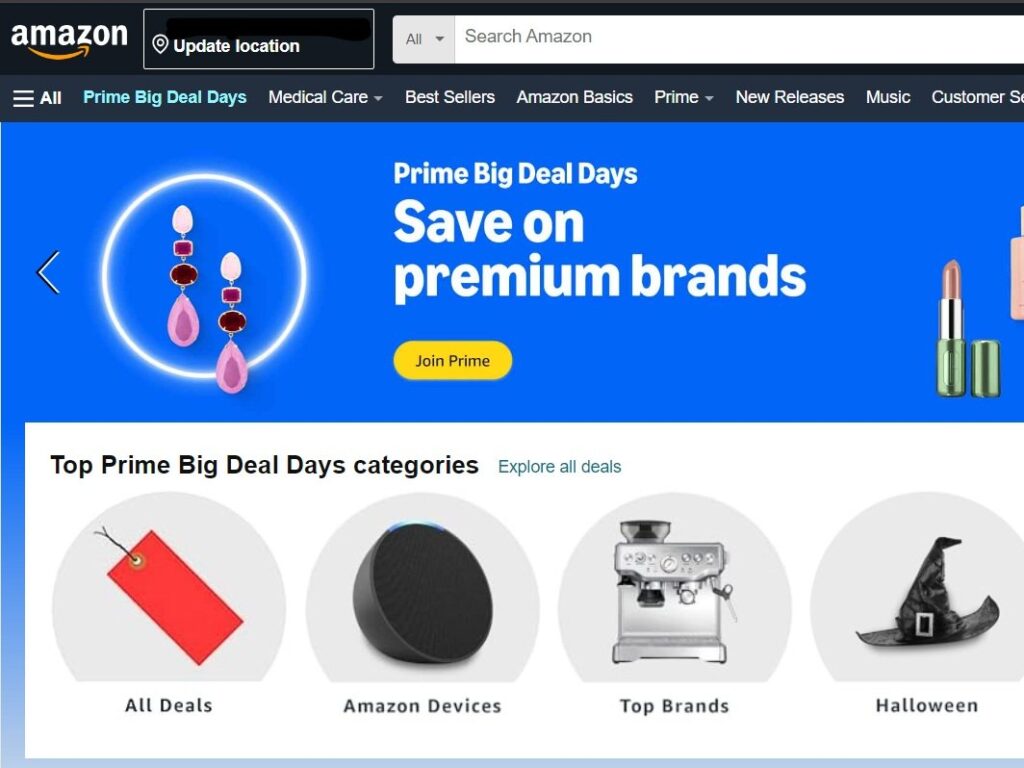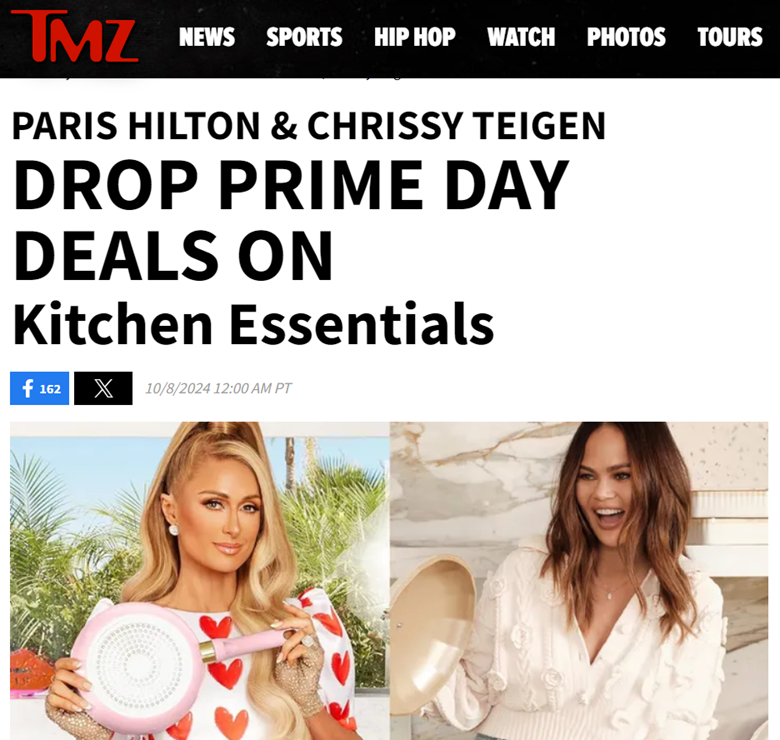Amazon Prime Big Deal Days Reshapes Holiday Spending
Big Deal Days, a newer addition to Amazon’s annual sales events, starts today — October 8, 2024 — and runs for 48 hours, serving as an unofficial kickoff to the holiday shopping season. Rebranded as “Prime Big Deal Days” in 2023, the 2024 event is about more than Prime memberships and exclusive discounts from a major e-commerce retailer.
Many industry experts are keeping close eyes on Prime Big Deal Days spending, so they can use it as a barometer for subtle shifts in consumer spending, particularly ahead of Black Friday, Cyber Monday, and crucial end-of-year opportunities to maximize revenue.

As 2024 Prime Big Deal Days get underway, Facteus is analyzing the latest transaction data to uncover emerging trends, fascinating insights, and what retailers may be able to expect for the rest of the year.
While those findings will be available soon, here’s a closer look at:
- Prime Big Deal Days & Recent Trends in Consumer Shopping Behaviors
- Prime Big Deal Days in 2024: Changes & Potential Impacts
To see spending patterns for Amazon Prime Day in July, check out our 2024 Prime Day data, along with our analysis of how consumer spending on Prime Day varied by generation (and region) and why Millennials spent less during the 2024 Prime Day event.
Prime Big Deal Days & Recent Trends in Consumer Shopping Behaviors
Over the past few years, Prime Big Deal days have carved out a distinct niche, with an increasing number of consumers earmarking this October event for discounting shopping. As one of two marquee sales events Amazon holds annually, Prime Big Deal Days has been associated with some remarkable spending patterns. Some of those are highlighted below.
1. An Increased Focus on Early Holiday Shopping
Typically set in early October, Prime Big Deal Days are ideally scheduled for holiday-focused consumers looking to jump-start their gift shopping.
Often, that translates into higher sales for “wishlist” items, like (but not limited to):
- Toys
- Apparel
- Electronics
- Home gadgets

2. A Greater Emphasis on Essentials
Aside from gifts, Big Deal Days have become synonymous with discounts on staple items, rather than luxury goods.
Specifically, that means products like kitchenware, linens, disposable toiletries, and other lower-ticket home-related items tend to be hotter than pricier non-essentials, like designer accessories, high-end electronics, and major appliances, even if those more expensive items come with similar discounts.
3. More Careful Shopping
Shoppers typically approach Big Deal Days more strategically. That means:
- Planning their purchases
- Comparing prices across retailers
- Deciding whether to buy now or wait roughly six weeks for Black Friday sales to start.

With that, many Big Deal Days consumers are not impulsive but, instead extremely budget-conscious, price-sensitive, and bargain-driven. They’re hunting for the best available deals and willing to wait if they think they can get better bargains on Black Friday or Cyber Monday.
4. An Eye Toward Competitors
Big Deal Days is no longer an exclusive event to Amazon. Competitors like Target and Walmart have gotten in the game, launching their own fall sales events to coincide with Prime Big Deal Days and directly compete with Amazon.
For bargain-focused consumers, this could be ideal, offering more opportunities for the best deals while somewhat tightening the competition before the holiday shopping traditionally kicks off.
Prime Big Deal Days in 2024: Changes & Potential Impacts
Entering the fourth quarter of 2024, Big Deal Days could inaugurate some newer trends while crystallizing other existing patterns in consumer spending.
Given what we know so far about 2024 Prime Big Deal Days, here’s how consumer sentiments, behaviors, and spending patterns could hold steady in some ways while shifting in others going forward.
1. More Dramatic Spending Variations by Generation
Leaning into trends mapped out by 2024 Prime Day, shoppers across different generations may continue to show distinct differences in how much they’re willing to spend, what they buy, and what they’re passing on over Big Deal Days and subsequent sales events.
In fact, many are now wondering whether:
- Consumer spending will increase or decrease over 2024 Big Deal Days.
- The average ticket price will rise or fall in light of consumers’ sensitivity to inflation.
- Millennials will continue to tighten their wallets through end-of-year sales events.
- Post-election sales events will reflect notable shifts in consumer sentiment and spending patterns.
2. More Celebrity Endorsed-Products
Though celebrity-backed products are nothing new to Amazon, more exposure — and bigger names entering the mix — could result in more sales for endorsed items, especially among consumers of certain generations.
This year, Paris Hilton and Chrissy Teigen are among the celebrities pushing discounted products over Big Deal Days, and:

- Both are hawking kitchenware, meaning items that align with shoppers’ focus on essentials, home goods, and budget-friendly items.
- Celebrity-adjacent outlets are getting in on the action, both by promoting the sales event (and celebrities involved) and showcasing their own recommendations as “affiliates” of Amazon.
This could bring in more dollars from younger consumers dialed into celebrity and internet culture, like Gen Z and Millennials.
3. More AI & “Bundled” Packages
Demand for AI-powered devices and tech that integrates with voice assistants could spike this year, with sales possibly rising for smart home appliances, like robot vacuums, security cameras, and virtual “assistant-type gadgets.
With that, subscriptions bundled with tech products could also be particularly popular, with special promotions offering unique value — and possibly raising the average ticket prices for some consumers.
4. More
As Big Deal Days continues to evolve in scope, discounts, and popularity, it may be poised to set off more significant transformations in retail spending at the year’s end.
Potential impacts could include:
- A longer holiday shopping season
- Big Deal Days, Black Friday, and Cyber Monday “staying in their own lanes” with discounts focused around specific sets of products, rather than being across-the-board or general in nature
- More niche sales entering the picture earlier in the holiday season, providing more variety and options for reduced prices and, in turn, benefiting more consumers looking for not-so-mainstream products

- Revenue-boosting opportunities for smaller retailers, independent brands, and entrepreneurs who can piggyback on Big Deal Days’ popularity to offer their own discounts at a time when bargain-focused shoppers are ready to spend
- More consumers front-loading their holiday shopping, which could lead to flatter end-of-year spending for some generations or in some retail sectors.
As Big Deal Days continue, Facteus will remain on the frontlines, analyzing the latest transaction data to connect the dots and decipher it in terms of consumer intelligence, retail insights, and spending trends.



